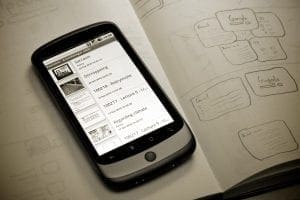We’ve all had at least one poor team meeting experience…you know the ones I mean—you leave the conference room and have no idea what just happened or why you were forced to experience it. Though it might seem far-fetched, it is possible to have a great meeting experience! The recipe for better team meetings is easy to follow and doesn’t even require a mixing bowl.
Step One: Send a Thorough Invitation
Regardless of how you’re sending your meeting invitations, it is important to include as many details about the meeting as possible. Time, date, and location might be a given, but what else would it be useful for attendees to know?
What is the point of this meeting?
Are you strategizing a website content overhaul? Going over the latest client offering? Letting the team know why they are coming to the meeting is just as important as where the meeting will be held.
How should attendees prepare?
Do they need to do research? Gather ideas for brainstorming? Making sure that attendees are prepared for the meeting will keep everything running smoothly and, as a bonus, help prevent you from getting annoyed about under-prepared attendees (c’mon, you know it’s annoying…).
What should attendees bring with them?
Pen and paper? Laptop? It might sound silly, but if you don’t tell people to bring a notebook and pen, they probably won’t.
Step Two: Prepare to Present
Speaking of preparation, you too should come prepared to your own meetings. Similar principles apply:
Research and brainstorm
Regardless of your industry or meeting topic, times are always a-changin’. What research and brainstorming can you do to make sure you’re up-to-date on your industry’s best practices?
Write an agenda
Agendas and efficient meetings are best friends. An agenda allows you to setup the complete structure of how you will run the meeting, start to finish.
Agendas also allow you a constant method for pulling the meeting back in from potential tangents/sidebars.
Bring what you need
Nothing is more painful to the ego then showing up at your own meeting without your laptop/notebook and pens/etc. Even in a flurry of busy-ness, make sure to remember your own things!
Step Three: Notes, Notes, Notes
You’ll want to use that laptop/notebook and pens/etc to keep track of what happens during the meeting.
Keep record of the meeting
Not only will record keeping help you remember what was established for action items (see Step 4) but also make recapping (see Step 5) much easier.
Delegate the tasks
If you’ll be presenting for the entirety of the meeting, it might be easier to assign note-taking to an attendee (or utilize a staff member who often takes on this responsibility). Make sure that whoever is taking notes writes legibly or types logically.
As a bonus, some really great ideas can be generated when you re-read your notes. You never know what you might come up with!

Step Four: Develop a Plan of Action
All good meetings end with a plan of action. A great way to organize your plan of action is with action items. Examples include:
- The team will send me their notes from the meeting
- I will send out tasks to persons x, y, and z
- Our next meeting on this topic will be scheduled for “date”
Note: In addition to notes, action items should also be included in Step 5.
Step Five: Recap
If you’re constantly on the go (which we can safely assume you are), the chances of remembering your meeting last Tuesdays are just as unlikely as remembering what what you had for breakfast. Recapping is a team meeting best practice and is useful for a few reasons:
Collecting the notes from the team
You’ll want to read through everyone’s notes and recapping gives you the time to do it.
Generate meeting highlights
High-level highlights can include main topics of conversation, decisions that were made, and action items
The next meeting scheduled for the topic, if there is one
Even though this is included in the action items, it’s important enough to mention twice. Get the date/time hammered out and then proceed back to step one!
Note: The meeting recap should occur the same day the meeting takes place and be made available to everyone at the meeting.

Leave a Reply